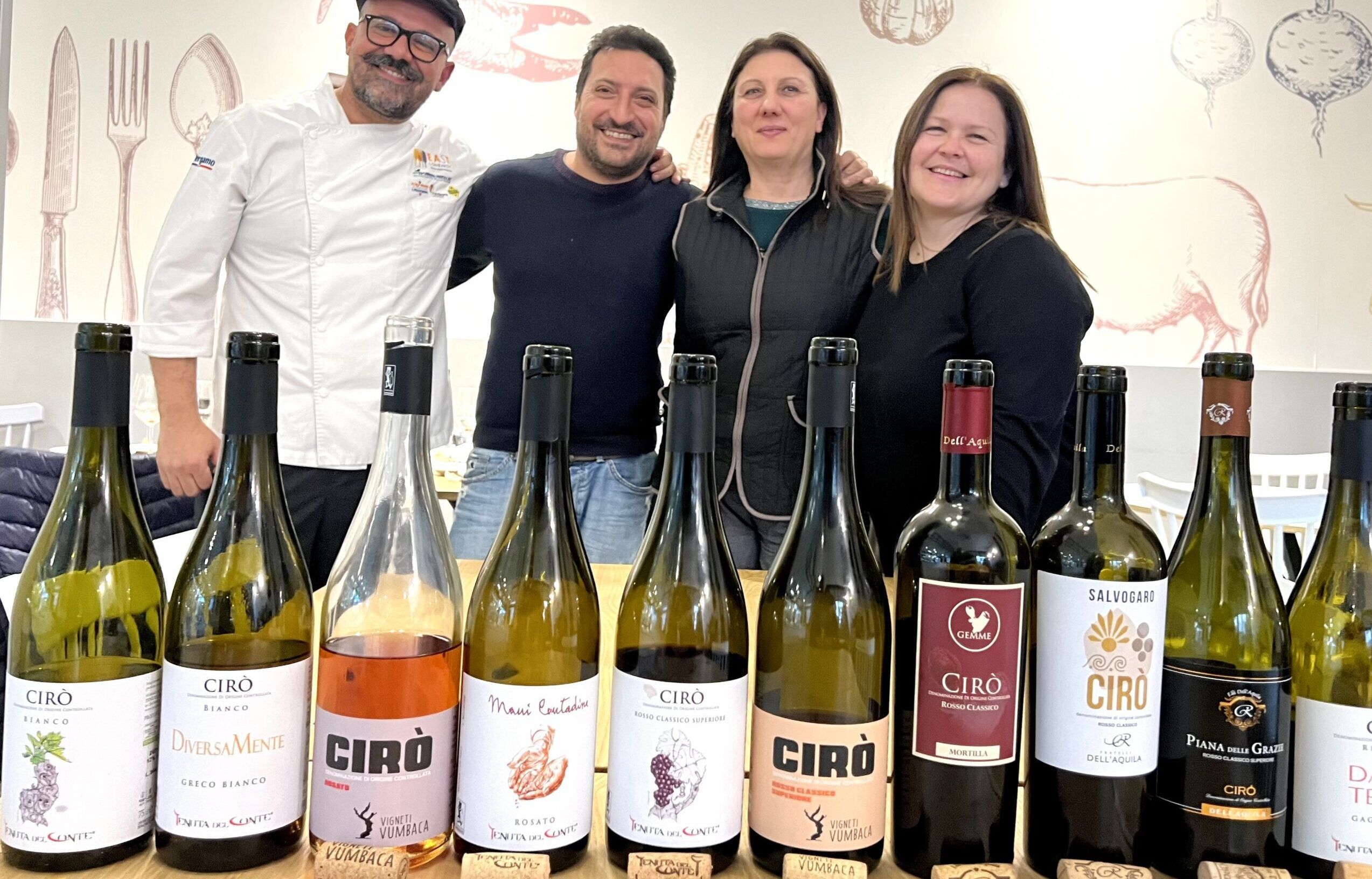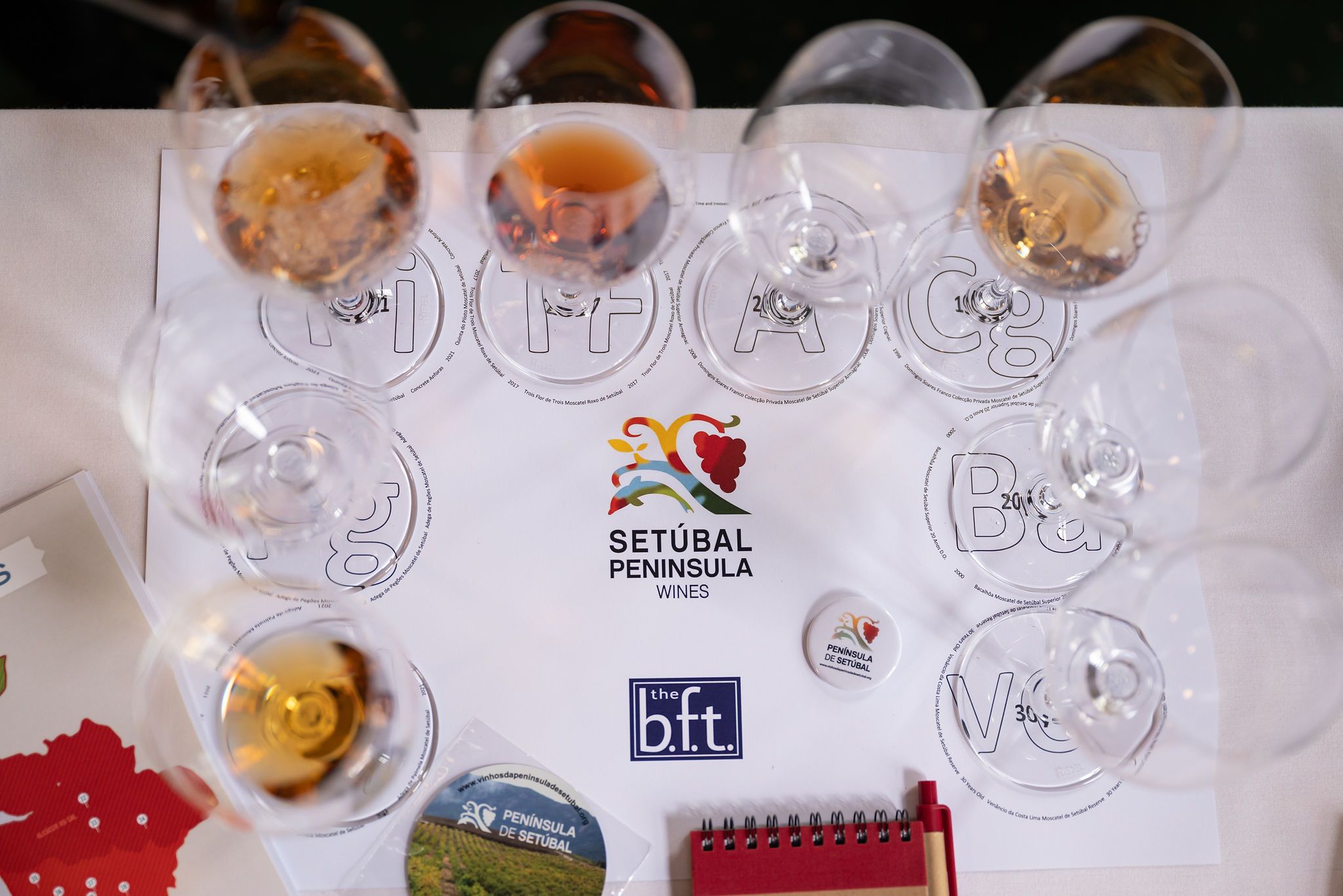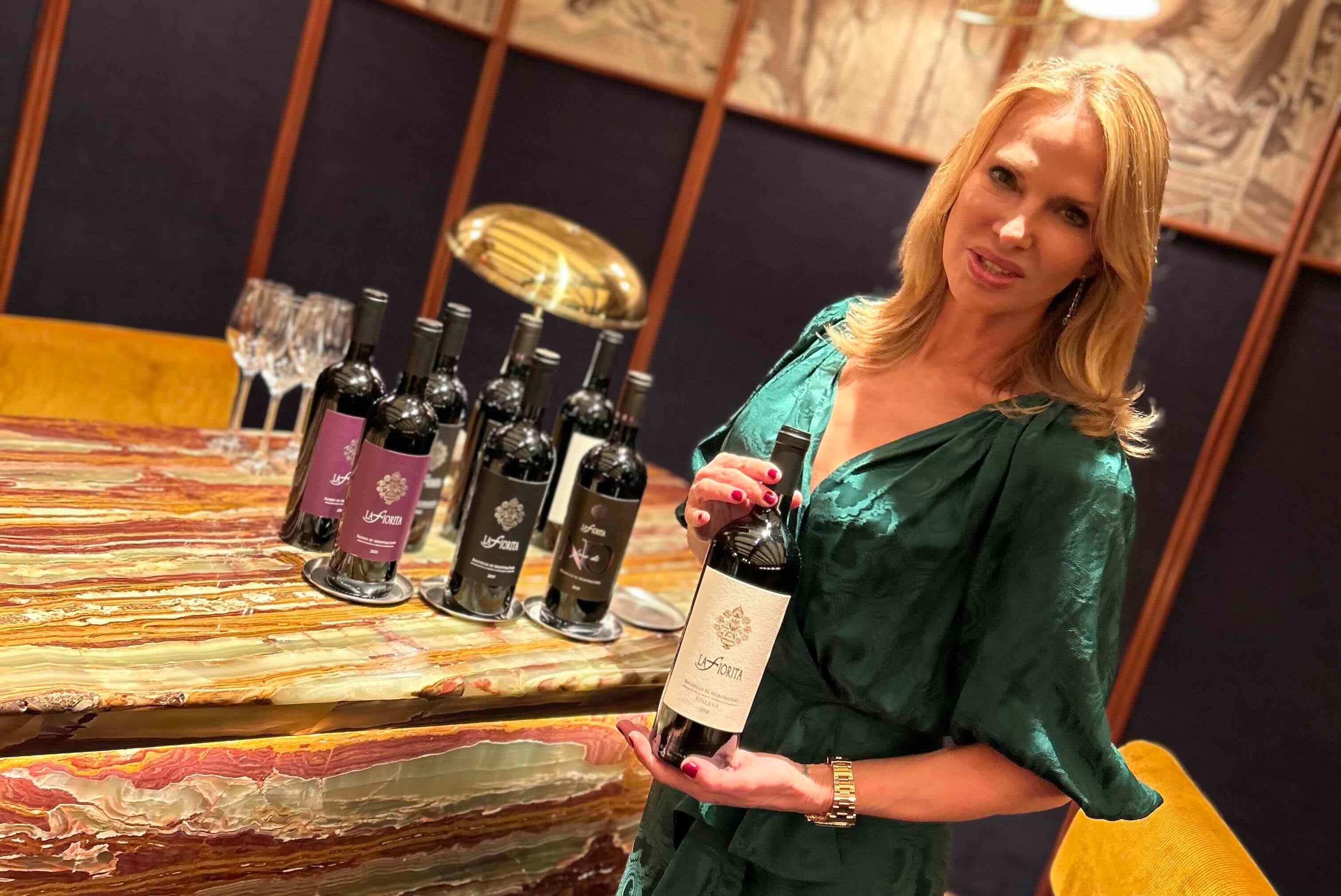You will have the chance to see for yourself the steps being taken in Calabria when producers who make up the Cirò Revolution are coming to London to host a tasting at 67 Pall Mall on March 19.
Contrary to Ryanair’s disastrous and recalled advertisement in 2020, Calabria is not all about Mafia and earthquakes. In fairness, the airline was trying to promote an area, hitherto not that frequented by many tourists, either English or otherwise. Calabria has the lowest GDP per capita in Italy, over two times less than that of Alto Adige.
In many senses, this is a depressed, underinvested region, often devoid of ambition or long-term planning.This is, of course, a massive generalisation, but the essence of these issues ring true for most Calabrians, who are still immensely proud of the rugged beauty of the region and the amazing produce that are still made from large and small producers alike.

Woodwinters’ Andrew Johnson urges wine buyers, importers and sommeliers to get behind the Cirò Revolution
Wines from this region have not found it easy to make their way to these shores.If I asked you to mention any of the DOCs of Calabria, I doubt many would have the likes of Sant’ Anna di Isola Capo Rizzuto DOC, Scavigna DOC or Bivongi DOC on the tip of your tongues.However, one DOC seems to stick out and currently shines brighter than the others.
Cirò, is considered one of the oldest named wines in the world with a winemaking history stretching back thousands of years.It has long been, and remains, Calabria’s flagship DOC, although while writing this article it was finally announced that Cirò will be granted DOCG status some time in 2024.
Cirò DOC, as it stands today, refers to white, rosé and red wine, but at the heart of the quality has been the Cirò Rosso made predominantly (80%) from the variety Gaglioppo.I truly believe that Cirò Rosso and Gaglioppo to be the most underrated appellation and grape variety in Italy.For those unfamiliar, it is best described as the Barolo of the South.It is often paler in colour than your traditional red but with a very large tannic presence.
In truth, it is probably more a stylistic cross between Barolo and Brunello di Montalcino, and this isnot surprising, as much of the parent DNA seems to come from Sangiovese.Cirò doesn’t have quite the fruit content that many Barolos or Barbarescos have, with perhaps a more savoury twist towards Brunello.Sometimes the wines can veer a little bit too much towards the savoury side, often giving the impression of a wine, old beyond its years.Oxidation, if not kept in check, can also be a problem as this variety is prone to this issue.But when all the elements are in balance, Cirò can be a truly majestic wine.
Commercial footing
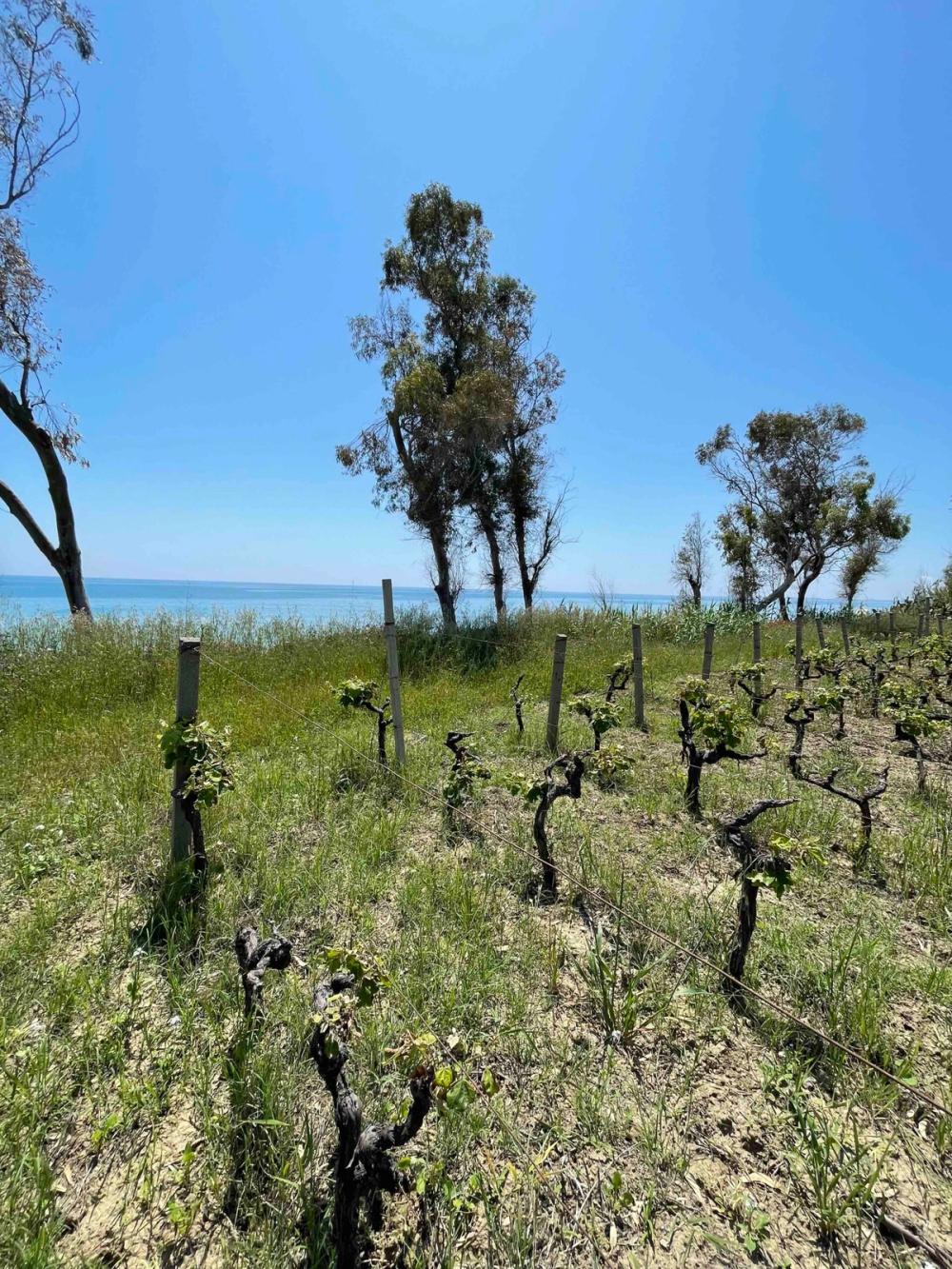
The Cirò Marina vineyard is only 10m from sea
Commercially, one of the main problems has been that much of Calabrian wine has been made in a slightly rustic style. The local market has become accustomed to this, but many of the wines are not suitable for the international market. As Calabria slowly finds its ambitious feet, producers are beginning to latch on to these ideas and realise a degree of evolution is needed if they want their wines to travel beyond these southern shores.As with so many regions in the world, younger, more travelled winemakers are now taking over from their parents and are bringing their slightly wider vision to bare on the style and quality of wines.
There are some larger producers who also play a major role in promoting the region and in terms of wine we see here in the UK they include Librandi (Berkmann Wine Cellars), Iuzzolini (Mondial Wines), Scala (Bibendum) and Ippolito (Hallgarten Novum).There is an interesting symbiotic relationship between these two tiers and it was nice to see that large producers saw the small artisanal producers as extremely important in raising the quality bar and being able to be a bit more experimental, and the small producers saw the larger producers as just as important as they have the budgets and volumes to open up other markets and are often the first wineries into certain new territories, breathing life into otherwise untapped distribution opportunities.This entente cordiale is not something we see in other regions so readily between large and artisanal producers.

Andrew Johnson believes that Cirò has the ability and potential to revolutionise wines from Calabria
The raw materials, in terms of soils, climate and varieties are there, and there are more than green shoots evident in this region which is desperate and ready to burst onto the international market.As previously mentioned, it is definitely Cirò that will spearhead the charge in terms of quality in Calabria.
Some time ago, 2010, a group of like-minded artisanal producers got together and started to create a more galvanised approach and a better understanding of the wines that were and could be made in this region under the banner ‘Cirò Boys’.In time, this group grew and grew and is now called the Cirò Revolution and includes the wineries A’ Vita (Passione Vino), Sergio Arcuri (Woodwinters), Cataldo Calabretta (Les Caves de Pyrenes), Tenuta del Conte (Astrum), Assunta dell’Aquila (seeking UK representation), Cote di Franze (seeking UK representation), Vigneti Vumbaca (Enotria & Coe), Rocco Pirito (seeking UK representation), Fratelli Cerminara di Cirò ( seeking UK distribution) and Francesco Fezzigna (seeking UK representation); with two female winemakers in their midst now, Cirò Boys seemed a little inaccurate.
The Styles
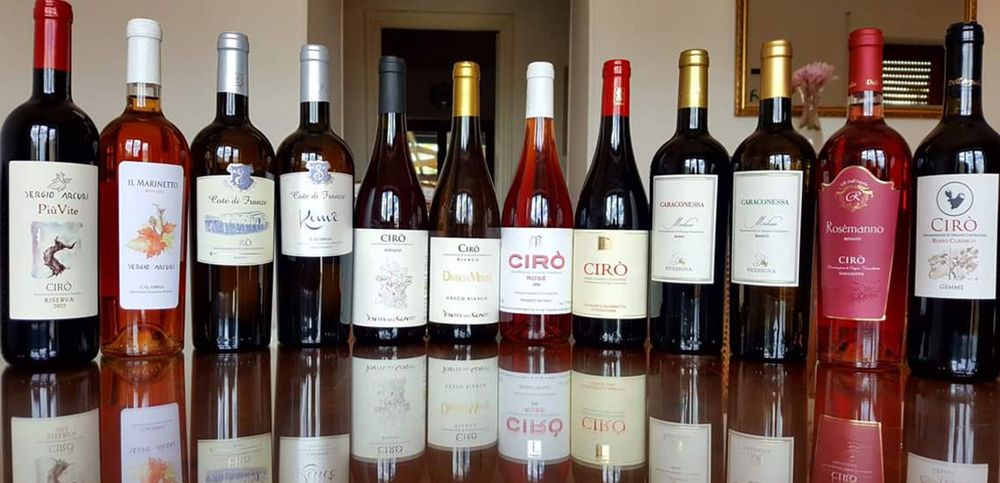
A range of wines from across the Cirò DOC which gains DOCG status in 2024
Cirò Bianco DOC.This is made predominantly from Greco Bianco 90% – 100%, not to be confused with Greco di Tufo or Greco Bianco di Bianco which is in fact Malvasia di Lipari.There are several other synonyms but this only serves to be more confusing.Greco Bianco often produces wines that can be slightly neutral, but the best versions have a wonderfully saline character with very citrussy, floral and herbal notes.
Cirò Rosato
This is one of the more idiosyncratic wines for the area and created much debate when I was talking to the producers out there.The colour is the first thing you notice.Sure, a few producers, often the large-scale ones, have adapted their style to follow the ubiquitous pale colour of Provençale Rosé.However, the smaller and more traditional producers seem to be firmly sticking to their guns and making Rosé with quite a deep red colour, made, as it is, from the Gaglioppo grape.
The colour can also morph into a slightly brownish colour, which I (humbly) suggested was also a bit of a challenge for the international market.On top of this, with relatively firm pressings, much of the tannic nature of Gaglioppo is transferred into the wine.Couple this with an often savoury edge, these are roses of a very particular nature.
Many of them are exceptional gastronomic wines, deserving of one’s attention but they are rarely the aperitif style rosés so in vogue at the moment.One of the reasons for the local affection for this wine is that it is still referred to as “vino del contadino” (the farmer’s wine), as it was often drunk as an alternative to the red wine when summer temperatures were too high.
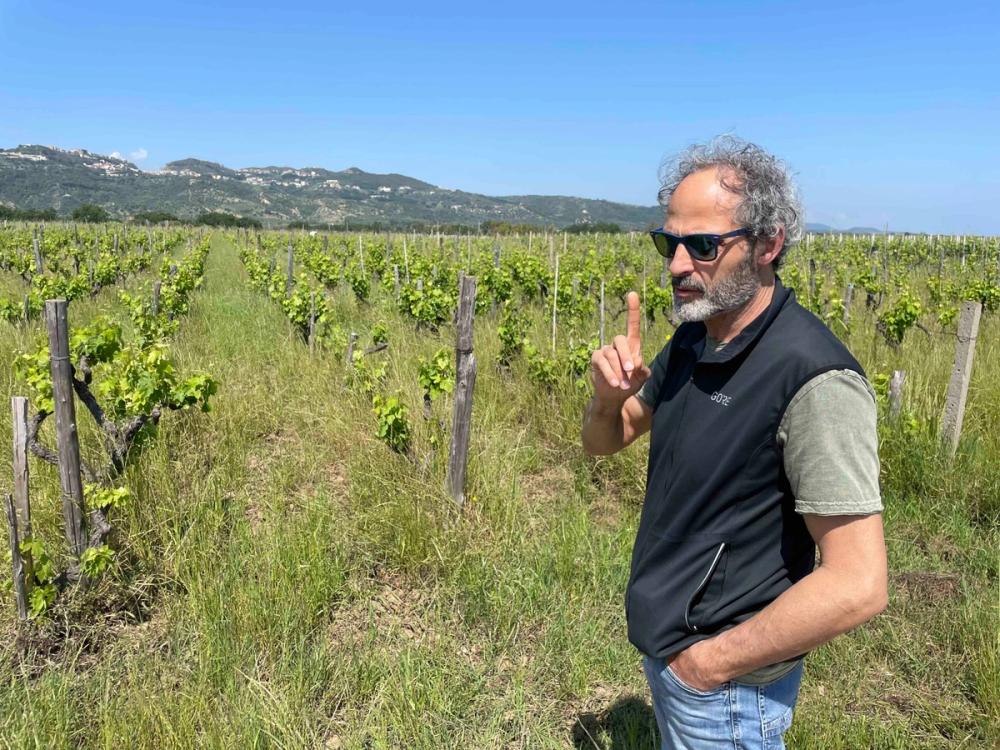
Sergio Arcuri is fourth generation grower based in Reggio Calabria’s renowned Ciró denomination and is imported by Woodwinters
Cirò Rosso
This is the undisputed king of red wines in Calabria and certainly the most important style of Cirò.I have even heard an MW say that a certain Cirò they admire was the best wine in Italy made south of Case Basse, a reference to the iconic wines of Soldera in Montalcino.This is quite the statement, but to some degree I believe that the best examples can be awe inspiring and give many Brunellos or Barolos a run for their money.
Cirò is made from 80%-100% Gaglioppo, although there is an allowance of up to 20% of other red varieties, but only 10% of those can be varieties such as Barbera, Cabernet Franc, Cabernet Sauvignon, Sangiovese or Merlot. Wines originating from the commune of Cirò or Cirò Marina can be classified as Classico, and with an alcohol strength of 13.5% Superiore can also be added.Finally, if the wine has been aged for two years in either tank or barrel, it can be classified as Riserva.Many of the new wave producers do not use oak ageing, as the natural tannins produce a wine that already has the structure and taste of a wine that has seen some sort of wood ageing.
Highlights:
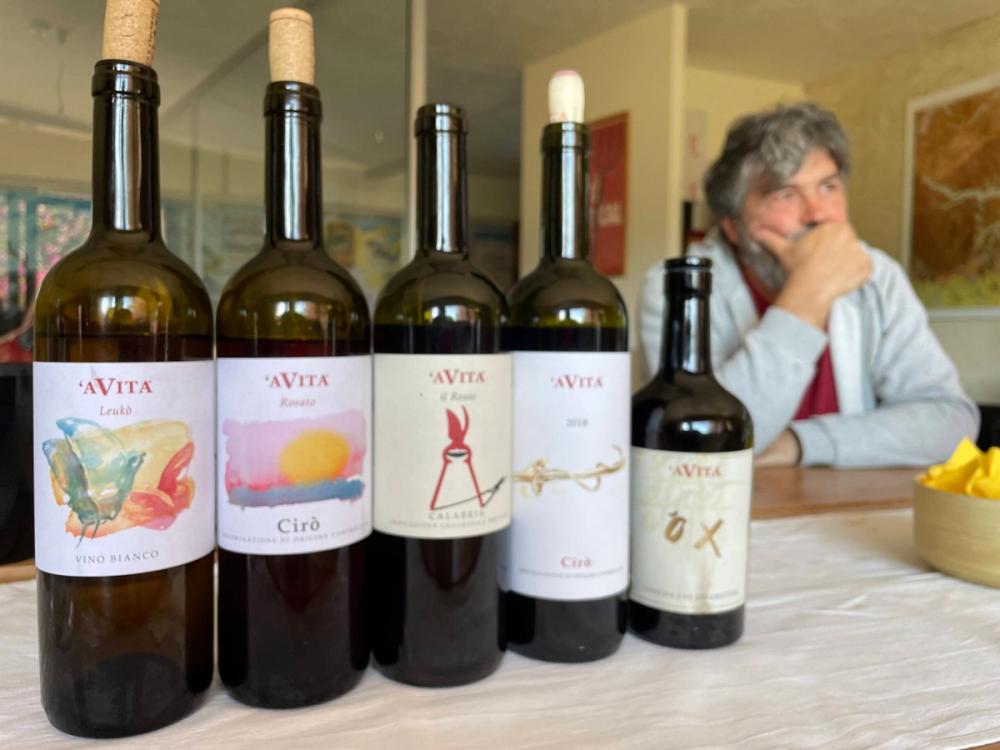
A Vita wines are one of Andrew Johnson’s Cirò highlights
‘A Vita. Cirò Riserva 2018.With an old school appearance, this wine’s colour is definitely heading towards that brownish colour with hints of mahogany. On the palate there is wave after wave of dried herbs, with a savoury core and delicate notes of dried fruit and autumn leaves.A truly benchmark wine for the region.
Sergio Arcuri.
‘Aris’ Cirò Rosso Classico Superiore DOC 2020. While his Più Vite is undeniably majestic, there was an immediacy and freshness to this wine that was simply captivating.Wild strawberries and pomegranate leap from the glass.This is very reminiscent of a top quality Piedmontese Nebbiolo.It mixes alluring vibrant fruit, with firm but ripe tannins and is a masterclass of texture and balance.For me, this style is what will help win the battle in the export market.A joy to drink!
Fratelli Cerminara di Cirò. Seeking UK distribution
Dune di Marinella 2021. One of the newest kids on the block – first vintage 2015.This was one of the most captivating whites on my visit.The wine is full of floral and citrus pith.The blend of 60% Pecorello, Greco Bianco and Greco Bianco di Bianco gave this wine a delicate soft stone fruit component.Some aspects of this wine you could describe as neutral, but it is the texture and delicacy of this wine that was so enthralling.I loved the pithy, bitter finish.
Cote di Franze.Seeking UK distribution.
Cirò Rosato 2022 DOC.This was one of the roses that managed to balance lots of zingy, bright red fruit with bags of freshness along with a slightly tannic grip.I don’t think Cirò Rosato should give up its seriousness in exchange for an easy export life, and this wine does just that and shows the true character of these unique rosés.
Fratelli dell’Aquilla. Seeking UK distribution.
Mortilla Cirò Rosso Classico Superiore 2020.Very brown, almost dark mahogany in colour.Despite its traditional look, this is very perfumed, with hints of red fruits and crushed dried leaves.The mid palate then leads into a more savoury realm with an amazing sense of age with a layered and long earthy finish.This is Autumn personified.
Fezzigna Vignaioli. Seeking UK distribution.

This winery makes some excellent Ciròs, but are one of the few wineries to also make wine from the DOC of Melissa. Caraconessa Melissa Bianco 2022.Slightly reductive on the nose, but in a good way, with hints of fresh lemons.The mid palate is both stony and citrussy with a beautiful crystaline purity.On the finish, there is just the faintest hint of sweet jasmine.This is the first Melissa Bianco I have ever tried and it was very impressive.
Vigneti Vumbaca.
Cirò Rosso Classico Superiore 2020. Brightly coloured, but with dark stewed stone fruit and firm but ripe tannins.There is a lot of power within this wine, and while the dark fruit wins the battle, there is plenty of balsamic background with hints of toasted fennel seeds.
Tenuta Del Conte.
Cirò Rosso Classico Superiore 2019.Very expressive with plenty of spice and crunchy red fruit on the nose.There is an exotic part to this wine with hints of tamarind and Indian spice.
Cantina Enotria.Seeking UK distribution.
While not part of the Cirò Revolution, I also tried wines from this winery which is larger than most of the small artisan producers but smaller than the big commercial names.
Cirò Rosso Classico Superiore Riserva 2018.Wonderfully meaty and figgy on the nose, autumnal bonfire and dried mint on the palate with firm but pliable tannins.This is a very serious effort from a winery with real ambition.
Cataldo Calabretta

Calabretta’s Rosso’s are benchmark wines and very well respected.On this visit the whites really stood out for me.Cirò Bianco 2022.Although the soils are not volcanic the wine has a pronounced volcanic feel to it.This is coupled with a tangy, almost salty twist, with soft stone fruit and an almost creamy acidity.The wine finishes with a mélange of wet stones and white flowers.
Gianni Lonetti Vignaiolo.Seeking UK representation.Juru, IGT Calabria Rosso 2021.Made from a traditional blend of 70% Gaglioppo and 30% Magliocco.Brimming full of forest floor aromas and a beguiling wild feel to the wine.The quality fruit is framed but a solid structure and finishes quite dry and serious.A wonderfully unique expression from one of Ciro’s younger winemakers.
Rocco Pirito.
Considered by many to be one of the leading viticulturists in the region, Rocco also makes a range of traditional wines.Brinifé Cirò Rosso Riserva 2016. Good typicity, with plenty of dried fruit on the nose.On the palate there is an interesting interplay of balsamic notes and cured meat.The wine finishes with a long savoury aftertaste.
Yes, much of the wine is made by co-ops and sent to northern Italy for blending into other wines;Yes only 4% of the region’s production is classified as DOC, but Cirò has fast become the flag bearer for what is possible in Calabria.Much in the same way as Santorini Assyrtiko has shined a light on Greek wines, I believe the same can be said for Cirò and Calabria.If your ever shrinking wallet is struggling to afford the ever increasing prices of your favourite Brunellos or Barolo, Cirò may well have the answer to your prayers.Welcome to the Revolution!
Finally, and after much planning, on March 19 2024 the majority of the Cirò Revolution gang will descend on London for a tasting at 67 Pall Mall and other activities.This is all part of their continued collaboration to further raise the profile of Cirò, and to help the producers not yet represented in the UK.
- For more details on Cirò and the producers mentioned in this article, or to discuss representing any of the un-imported wineries, please contact Giusy Andreacchio at giusy@giusyandreacchio.com.
